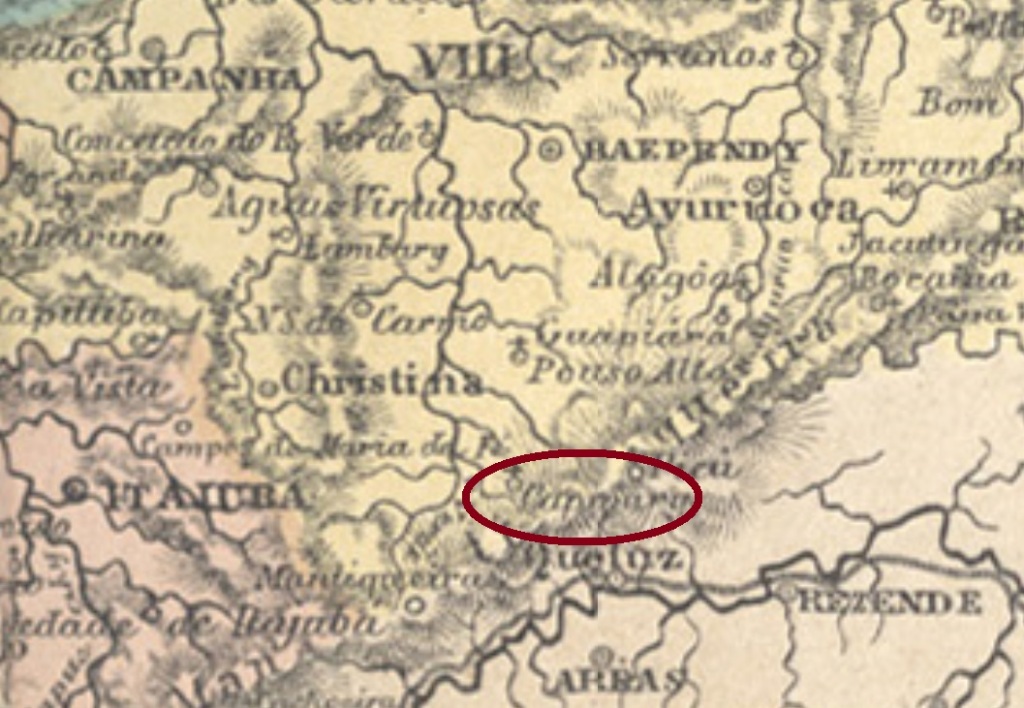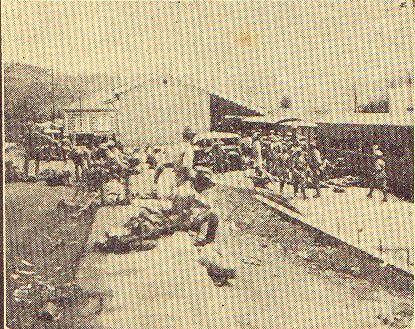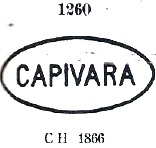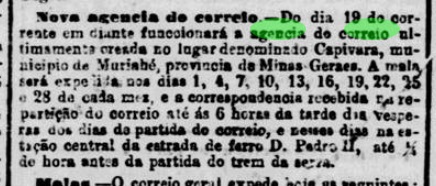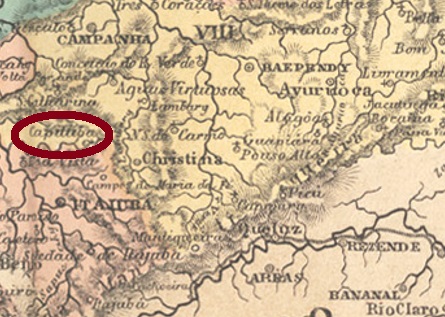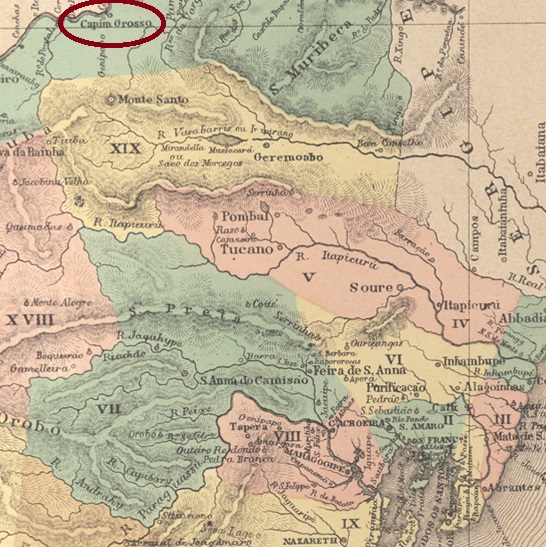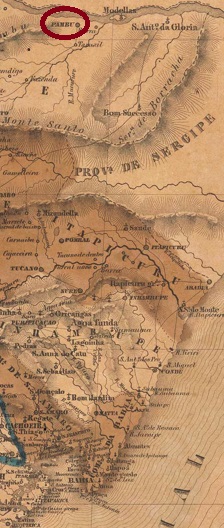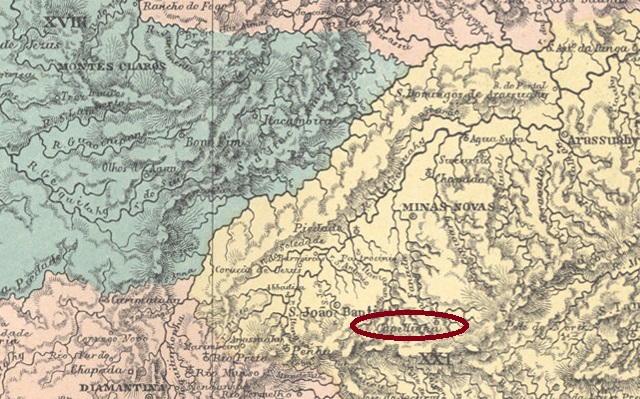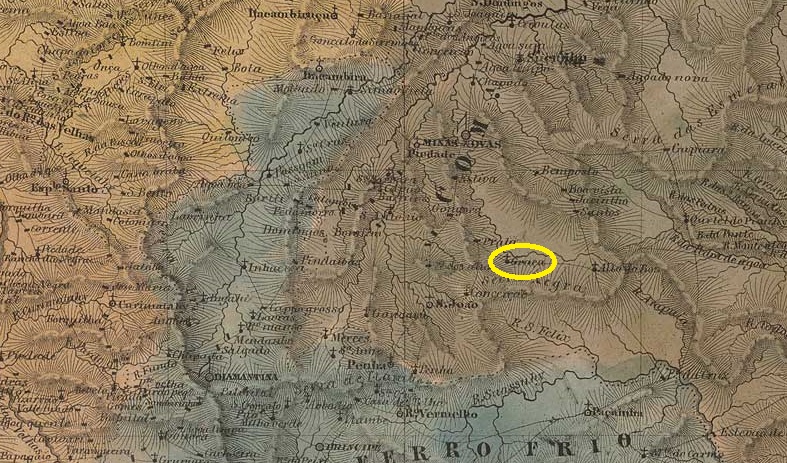
Other names: Lapa de Capivary, Silva Jardim (1943)
The Freguesia de N. Sra. da Lapa de Capivary was founded in January 1755, belonged to the Vila de Cabo Frio and was located on the south bank of the Capivary, 110 km east of the capital Rio de Janeiro. The place was elevated to Vila in May 1841 and to town in January 1890. Since December 1943, the município has borne the name Silva Jardim, in honour of Antônio da Silva Jardim (1860-1891). He was a lawyer, journalist and politician who strongly supported the Republic and the abolition of slavery. He died shortly before his 31st birthday in an accident on Mount Vesuvius:

Three dates have been found for the founding of the local post office. First around 1841, as shown in the 1842 report of the Imperial Ministry:

The next two dates are close together, from February 1843: Paulo Novaes (agenciaspostais.com.br) writes 3 February, while Nova Monteiro (Administrações e Agencias Postaes do Brasil Imperio, in Brasil Filatelico/RJ, 1934-5; reprint SPP 1994-1999) gives a date 10 days later. The oldest postmark is CRJ-0300a, which probably dates from the pre-phila period. It is registered with P. Ayres (Catálogo de Carimbos Brasil-Império, S. Paulo, 1937, 1942) under no. 1261.

This was followed by CRJ-0300b, also in P. Ayres (op. cit.), now under No. 1262:

Then came CRJ-0300c (picture from the internet):

The assignment of the following cancel CRJ-0300d (image P. Novaes) is not yet certain.

From 1887 postmarks with the place name LAPA DE CAPIVARY circulated (see also Carimbologia XXVI).

Andere Namen: Lapa de Capivary, Silva Jardim (1943)
Die Freguesia de N. Sra. da Lapa de Capivary wurde im Januar 1755 gegründet, gehörte zur Vila de Cabo Frio und lag am Südufer des Capivary, 110 km östlich der Hauptstadt Rio de Janeiro. Der Ort wurde im Mai 1841 zur Vila und im Januar 1890 zur Stadt erhoben. Seit Dezember 1943 trägt der Município den Namen Silva Jardim, zu Ehren von Antônio da Silva Jardim (1860-1891). Dieser war Anwalt, Journalist und Politiker, der sich stark für die Republik und die Abschaffung der Sklaverei einsetzte. Er starb kurz vor seinem 31. Geburtstag bei einem Unfall auf dem Vesuv:

Für die Gründung des örtlichen Postamtes wurden drei Daten gefunden. Zuerst um 1841, wie aus dem Bericht des kaiserlichen Ministeriums von 1842 hervorgeht:

Die nächsten beiden Daten sind nahe beieinander, aus dem Februar 1843: Paulo Novaes (agenciaspostais.com.br) schreibt den 3. Februar, während Nova Monteiro (Administrações e Agencias Postaes do Brasil Imperio, in Brasil Filatelico/RJ, 1934-5; Reprint SPP 1994-1999) ein um 10 Tage späteres Datum angibt. Der älteste Poststempel ist CRJ-0300a, der wahrscheinlich aus der Vorphila-Zeit stammt. Er ist bei P. Ayres (Catálogo de Carimbos Brasil-Império, S. Paulo, 1937, 1942) unter Nr. 1261 registriert.

Es folgte CRJ-0300b, ebenfalls bei P. Ayres (op. cit.), jetzt unter Nr. 1262:

Dann kam CRJ-0300c (Bild aus dem Internet):

Die Zuordnung des folgenden Stempels CRJ-0300d (Abb. P. Novaes) ist noch nicht gesichert

Ab 1887 kursierten Poststempel mit der Ortsbezeichnung LAPA DE CAPIVARY (s.a. Carimbologia XXVI).
